One of the best things about running is we always have the opportunity for a new challenge. For me, learning how to start trail running in 2015 after over a decade on the roads was an entirely new adventure worth exploring!
Beginner trail running is often a place where long-time road runners find themselves when they’re in need of a new feeling, scenery, or challenge. Trail running—and especially trail races—are entirely different than training for something like a 10-mile road race, but don’t let that intimidate you.
Let the dirt trails and rough terrain excite you for new automatic PRs. And honestly, the aid stations are WAY better.
I think one of the biggest things trail running has taught me is to simply enjoy whatever the day may bring. You can’t compare runs because one might be a single rugged trail that gradually climbs, and another may be a super technical long-distance run at 10,000 feet!
That’s so very different from road running and I think a key mental release for many of us!
While trail running might seem like an intimidating but exciting variation in your morning routine, these quick tips will help you transition from the road to the trails with ease.
Once you throw on your trail shoes and head out into the beauty of nature, you’ll be hooked. It’s going to be harder in some ways, a different experience that will require different muscles. Instead of worrying about pace, get focused on the new experience.
So, how do beginners start trail running?
- Find the right off-roadtrail running shoes for more traction and comfort
- Learn how to find running trails for all abilities
- Get in the mindset of exploring and trying something new, not comparing to your road running
- Go!
Use these beginner trail running tips to help you explore an entirely new side of your running and see a whole new world of possibilities! It will make you a better road runner and bring a lot of joy back to your workouts.
Is Trail Running More Difficult than Road Running?
First of all, let’s be clear: both trail running and road running have their own unique charms and challenges. But if you’re looking for a little extra spice in your running routine, off-road running might just be the path for you!
Trail Running
- Terrain: Unlike the smooth surfaces you find on roads, trails typically have a lot of different terrains like rocks, roots, mud, and even occasional creek crossings. It’s an adventure in every step!
- Elevation: You might encounter some hills or steep inclines. Trail running often requires a different set of muscles and offers a killer workout for your legs.
- Scenery: One of my favorite things about trail running is that you get to run through some really beautiful natural landscapes. It’s a great way to explore new places.
- Pacing: You might find yourself slowing down on trails, and that’s okay.
Road Running
- Predictability: Roads are usually flat and clear of most obstacles, which makes it easier to maintain a consistent pace.
- Accessibility: There’s no need to drive to a national park or somewhere specific. With road running, you can start your run right from your doorstep.
- Speed: If you’re working towards a PR, road running might be more your style.
- Traffic: You’ll need to be mindful of cars and traffic signals, but that’s all part of the urban running experience.
So, is trail running more difficult than road running? Well, it depends on what you’re looking for. If you enjoy unique physical challenges and taking in breathtaking natural views, trail running might be more “challenging” in a fun and exciting way.
How To Prepare For Your First Trail Run
Many days we simply grab our watch and head out the door to run, but with trail running we want to be a little more prepared. On the off chance that you should get lost or trip, we need some extra preparation.
Let’s start with a quick trail run checklist:
- Wear a hydration pack – makes it easy to take things you need
- Absolutely carry snacks – that backup energy bar may surprise you as trail running makes us hungrier
- Water – there are no water stops! You must carry water
- Safety alarm and or gel pepper spray
- Tissues and blister pads – listen, sometimes ya gotta go, and sometimes ya trip
- Extra lube on your toes and feet, they will move around differently in your shoes, which leads to runner’s toe.
Ok, now that we’ve got some quick tips out of the way, let’s dive into the bigger stuff. Here are 20 trail running tips to keep you safe, injury free, and enjoying the experience.
20 Beginner Trail Running Tips
In order to get ready for your first trail race or for a longer distance on the trails, you may need to make some adjustments to how you train, which is what we’re going to dive into today!
When I’m training for a trail race, I train by preparing my body and my mind and also by making sure that I have the proper gear to make my trail race an experience to remember.
These trail running tips will help you just get started on your own or begin thinking about that first trail race…perhaps even an ultramarathon!
#1 Choose Trail Running Shoes
Can you use road running shoes for trail running? Depending on how much technical terrain you’ll encounter while running, you can get away with road running shoes for a while. But as I quickly learned, the right training shoe adds a level of stability and comfort that makes them worth the investment.
I mean, did you really need an excuse to buy more shoes anyway?? If you’re dipping your toes (pun intended!) into trail running, you’ll soon discover that ordinary road running shoes might not quite cut it on the rocky, root-filled paths you’ll encounter. This is where trail running shoes strut onto the scene.
Depending on how technical the trail is that you’re running, you can get away with road running shoes for awhile. But as I quickly learned those right shoes add a level of stability and comfort that make them worth the investment.
I mean, did you really need an excuse to buy more shoes?? These shoes will help give you more traction around the downhills and have rock plates which will help protect your toes.
✅ Here’s a list of the best trail running shoes (based on my testing and yours!).
Deeper Lugs for a Strong Grip
Trail shoes are designed with deeper lugs on the bottom, offering you that vital grip as you traverse muddy paths, gravel, and loose terrain. Think of them as your secret weapon for staying upright when the trail gets slippery!
Thicker Rubber Outsole for Stability
You’ll notice these shoes feel a bit more robust and have a bit more stiffness. That’s because of the thicker rubber outsole that provides stability and support as you navigate the unpredictable twists and turns of the trail.
Stiffer and More Rigid for Control
Trail running shoes may feel a bit stiffer and more rigid than what you’re used to, but that’s a good thing! This added rigidity provides more control over uneven surfaces and allows for a higher level of precision in your foot placement.
Traction Around the Downhills
Running downhill on trails can be thrilling but challenging. Trail running shoes provide the necessary traction to ensure you descend with confidence, no matter how steep or slippery the path may be.
Rock Plates for Toe Protection
Ever stubbed your toe on a hidden rock or root? Ouch! Most trail running shoes come with a rock plate, a thin, flexible layer of material that helps protect your toes from sharp objects on the trail. Trail running shoes also usually have a more narrow toe box for more precision when moving over technical terrain.
#2 Choose Taller Running Socks
And since we’re on foot wear, why do trail runners wear tall socks?
Stopping to repeatedly pull a rock or trail debris out of your shoe to prevent blisters is pretty annoying! Also, depending on the trail, you might be running through grass, and that extra layer can prevent scrapes or bug bites.
Trust me, it’s worth those few extra inches to feel better on the run!
#3 Practice Trail Running Safety
As with many outdoor endeavors, it’s a good idea to let a friend or family member know where you’ll be setting out to run. Sometimes trails can take you to remote places, and in case of an emergency, it’s good to let someone know where you’ll be, and what time you’ll be back.
Better yet, as someone new to trails, never go alone!
- Checkout my favorite running safety gear
- Grab GPS watch with an emergency alert function
- Share your location with someone when starting your run
- Leave a note on your car if heading out on a long solo run
#4 Train with a Hydration Pack
Depending on the length of the trail race, aid stations are sometimes few and far between. And, of course, if you head out solo on the trails, you just want to be prepared in case you go a bit long or take a little wrong turn.
Things you might want to put in your vest besides fuel:
- headlamp
- blister pad (I carry compeed)
- tissues
- bear spray or pepper gel runner spray
- first aid kit if you’re going super long like many ultra runners
Oddly, I can run for hours on the road without needing fuel. However, on the trails, you’re often moving a bit slower, and the body can indeed get hungry!! Pack snacks!!
I find that it is easiest to carry your own hydration and fueling supplies so that you don’t get stuck on the trail feeling like you might bonk. That’s very dangerous!
Check out my running hydration pack options >> (I’ve used all of these and trust the fit)
This leads to the next point…
#5 Overestimate Fuel for Trail Running
When you’re out on the trail, you’re often heading out away from civilization, and often you’ll spend more time outside than you planned, making it important to ALWAYS carry some form of nutrition and hydration.
You can’t stop at a nearby water fountain or duck in to the 7/11, be like a boy scout and always be prepared.
- Water
- an electrolyte drink
- granola bar, fruit or jerky (I usually have a combo)
Dehydration can seriously slow you down and can make even a short, well-traveled route feel like a marathon. Keeping hydrated will keep you from bonking, and keep the run fun!
Plus, drinking plenty of H2O will ensure that you’re mentally sharp while on the trail. It can also ensure that your stomach doesn’t hurt or that you can’t take in that needed fuel.
#6 Remember to Leave No Trace.
Like all good campers, hikers, and trail runners will tell you, you should be prepared to carry out what you bring in.
This is another reason training with your hydration pack on will come in handy, or you can wear clothes with pockets for carrying your energy gels or stuffing away those squares of paper after you tackle your first squat and pee.
#7 Carry Trail Maps
For many, running can be an escape from technology. You lace up your running shoes and can spend your workout disconnecting from phones and computers. And since many devices won’t always get a signal, you need to be prepared!
When making the switch to trail running, getting lost can be a risk, especially on trails that you’ve never run before.
Apps such as trailrunproject.com offer an excellent way to keep track of where you are, where you’re going, and how to get back to the parking lot in a pinch. It runs off of GPS, so even when you have no signal, you should be able to get an idea of whether or not you’re on the right path.
A good trail running watch will also have a “back to start” feature that will guide you back to where you came from.
You can still use your workout as an escape, but bringing your phone along can provide a life-saving resource in an emergency.
#8 Know How Technical Your Trail Will Be
Instead of looking at mileage, you’ll need to start thinking about the total time you want to be on the trails.
That’s because a more technical trail with variable terrain or a lot of elevation gain could take significantly longer than running on flat gravel roads or pavement. Before we do any trail, I look it up on the Trail Run Project to see how it’s rated, then I use the slider to check out what the climbs look like.
Technical terrains mean you need to practice some trail running skills in advance to stay safe.
#9 Wear Running Layers
When you’re heading out for a trail run, it’s important to keep in mind that you’ll be farther away from shelter than on a simple jog around the neighborhood.
It’s good to keep changing weather conditions in mind, especially if you’re training anywhere near the mountains. And to prepare accordingly by layering your clothing with pieces that can be added or removed (another good reason to wear hydration vests!).
- A running rain jacket or light weight windbreaker with water-repellent fabric can come in handy if you’re gaining significant elevation
- Yak Trax might give you a leg up on icy or snow-packed trails
- Working with the elements and planning ahead will keep you moving forward instead of having to turn around at the trailhead.
Here are my tips to layer for winter running.
#10 Work on Your Stability and Balance
During a trail race, you’ll encounter rocky terrain with roots, sticks, tree branches, holes, and more. Ankle strength suddenly becomes far more important than it ever was with road running.
This varying terrain will require that you include strengthening exercises in your training that will improve your overall balance and ankle stability (i.e. step ups and walking lunges with weights).
Improving your core strength will also help you to nimbly navigate over challenging trail terrain without missing a beat. (Your joints will thank you!)
BONUS: Check out these ankle exercises to help prevent strained or rolled ankles! Or use a good ankle running support.
#11 Practice Picking Up Your Feet
In distance running, we often keep our feet low to the ground as a means of conserving energy. But on the trails, this could lead to disaster as you need to truly step up and over all the little things in your path.
As your body becomes fatigued, it’s easy to think less about this, which can cause unexpected tripping and falling down on the trails. I’m guilty of this on sidewalks, ha!
So I have practiced paying more attention on the trails and looking a few feet ahead to know what may need to be traversed.
Here are a few skip drills that can help you with this as well.
#12 Allow Yourself to Be Present
This trail running tip sounds too cliche, but it’s not quite what you thinking.
While slipping into the zen mental space of a run might feel great, it’s important to stay present while trail running. Even the most well-maintained trails can have unexpected obstacles, and you’ll want to keep your attention on them to avoid a trip.
- You’ll need to pay attention so you can focus on form
- Pick your feet up higher than on roads
- Don’t let the hydration pack cause you to curl shoulders forward
If you’re looking to really feel present and get into that zen mental space, check out Alastair’s Trail Running Films! It’s the perfect thing you need for some visualizations before hitting the trails (or when you’re day dreaming about it!).
#13 Let Go of Your Road Running Pace
If there is a trail tip I love most, it’s this!
Trail running and road running may seem similar, but comparing your minute-per-mile time between the two is akin to comparing apples with oranges. The obstacles present on the trail, as well as the variation in grade or elevation changes, makes holding a consistent pace difficult, if not impossible.
Instead of using minutes/mile to judge, run by perceived effort to gauge how hard you’re working.
- head out on the trail for a set amount of time
- try to push yourself to run further in that same amount of time when you next return
- You can still challenge yourself without trying to stick with unrealistic minute-per-mile goals
Is trail running slower than road running?
Most likely, yes. But don’t be discouraged if your trail pace is slower than your road pace. You have to work much harder when trail running!
The two just aren’t comparable depending upon the terrain.
What is the average pace for trail running?
There is no average! But many road runners will tell you they can be a couple of minutes per mile slower on the trails, especially when running at altitude, up steep hills, or on a technical trail.
You simply can’t compare one trail to another.
Ultrarunners have taught us all that walking the uphills is a better way to conserve energy and thus allow you to keep running farther! Power walking those hills might slow your pace technically, but it helps you keep going.
#14 Include Hill Workouts
Just like in road racing, running uphill repeats will help you to build leg strength and will be necessary to help improve your aerobic capacity.
This is also a good opportunity to practice using a strong arm swing to help you climb each hill using not only the power of your legs but also your core and upper body too! Many trail races venture into mountainous territory, so you will be glad you tackled those hills during training.
When someone asks if trail running is easier than road running, I think of hills….NO.
- Trail running can allow you to let go of thinking about pace, which might make it feel easier
- Trail running can be more enjoyable with the views and that could make it feel easier
- Effort wise it is indeed harder
You’ll often see experienced trail runners power-hike steep sections of trail. This isn’t because it’s easier, it’s because it’s more efficient for the total workout. It keeps their heart rate from shooting up, which will impact their total endurance.
#15 Find a Friend to Train With
I admit that my general preference is to go solo so I can enjoy the surroundings and not feel any pressure on my pace. But the truth is that any training with friends is going to make you stronger and can help the time fly.
If you’re nervous about trails or getting lost, then it’s time to embrace the power of group running or just find a single friend to go with you!
#16 Vary Your Training Conditions
Weather can have an impact on trail conditions, making them muddy and slick, so be sure to hit the trails during your training, even if they are a total mud pit.
During my Costa Rica running retreat, I realized how little time I’d spent on trails that were slick due to wet leaves and it was a game changer.
First I realized, that running poles were my new best friend. The slight addition of stability allowed me to continue moving quicker.
Second, this road runner finally embraced the mud and dirt of trail running. Have fun getting dirty and be a kid! Might as well enjoy the conditions, whatever they may be, as you’re in some pretty cool places.
#17 Trail Running Wildlife Awareness
When heading out on a trail run, be aware that you might be headed into someone’s home.
Most animals are afraid of humans, but extra caution should be taken at the dawn/dusk hours when predators might be out and about. Educate yourself on the best practices if you see a critter, and keep familiar with the types of animals that you might see on the trail.
- Back slowly away from bears
- Stay calm and still with a mountain lion
- Don’t try to jump over rattlesnakes, you’ve got to let them move
#18 Pay Attention to Sunrise/Sunset
Especially when you’re heading on an out-and-back trail run, its important to keep an eye on the time. While reaching a peak or an endpoint may be the goal, remember that you’ll have to make your way all the way back to your car.
Especially in places where afternoon thunderstorms come early, it’s easy to assume that you’ll have more time than you really do.
Inclement weather and the setting sun make a much bigger difference when you’re on a remote trail than when you’re looping around your neighborhood, so keeping track of your time might be prudent.
#19 Continue Doing Speed Workouts on the Road or Track
In order to be fast on the trails, continuing your normal speed workouts (fartleks and intervals) will keep your overall speed up when you head out on the trail.
Depending on whether you’re running uphill or on a technical trail with rocks or uneven terrain, you can’t use running pace effectively for speed workouts.
It’s definitely okay to do these workouts where you feel comfortable and not feel like you must spend every single run on the trails. The combination of longer runs on the trails and short speed sessions will make you a better overall runner.
*That being said, you can 100% do speed work on the trails. The key is to remember that you’re doing these by effort level and not by pace.
#20 Sharing the Trails
Many times you’ll be sharing the trail with mountain bikers. While they will often stop and let you pass, it’s incumbent upon you not to have music so loud in your headphones that you don’t hear them coming.
They’re obviously much faster, and I generally prefer to step to the side so they can move on by.
All the new runner tips I’ve shared before really apply here too. Be patient. Have fun. Embrace the journey!
Good luck training for your trail race, and enjoy everything that comes along with venturing off the roads. You may discover that you are truly a trail runner at heart.
Looking for more trail running tips?
- Best Trail Running Watches (extra long battery life, altimeter, etc)
- Trail Runner Gift Ideas
- First 50K Training Plan
- Comparing Nike Trail Running Shoes
- Best Trails Near Denver and Boulder
Other ways to connect with Amanda
Instagram Daily Fun: RunToTheFinish
Facebook Community Chatter: RunToTheFinish
Sign Up to Receive a Weekly Newsletter with Top Running Tips

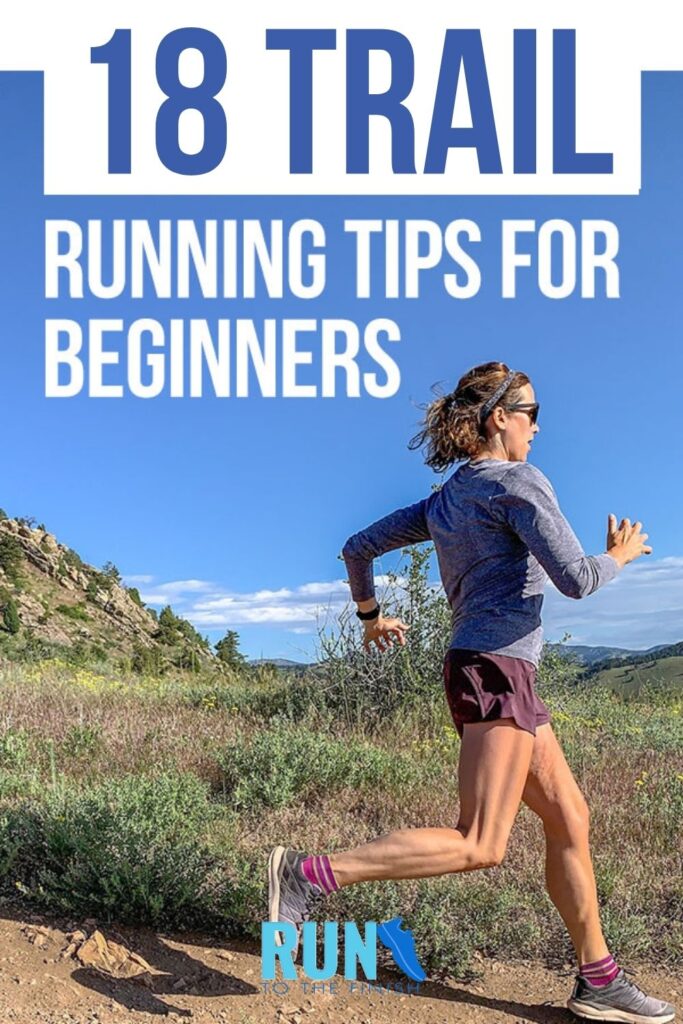
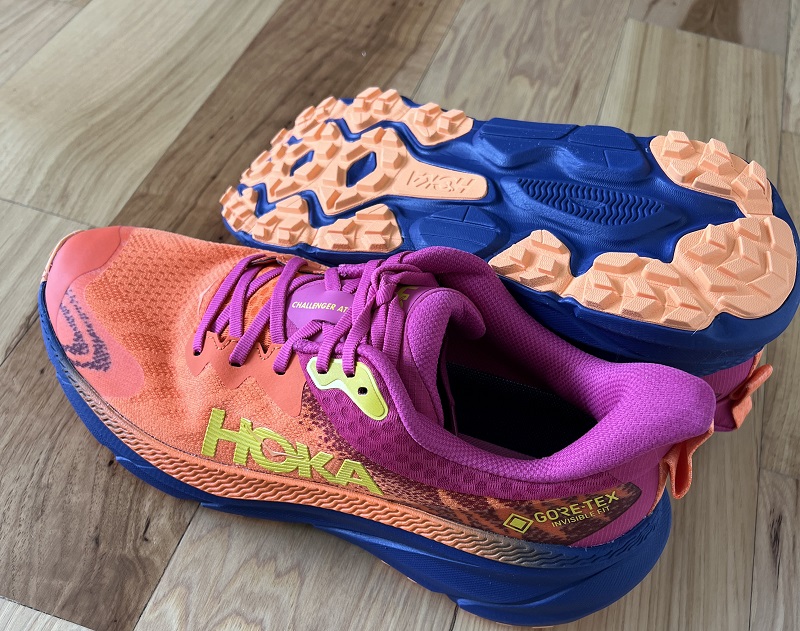
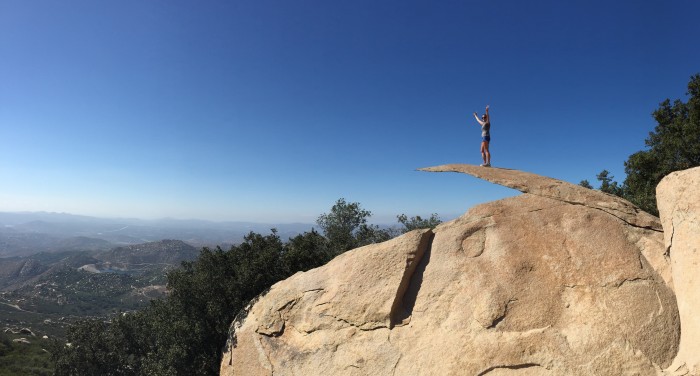
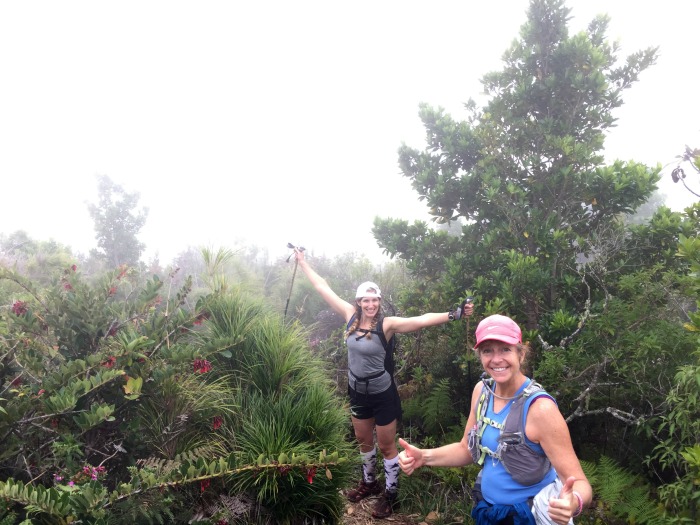
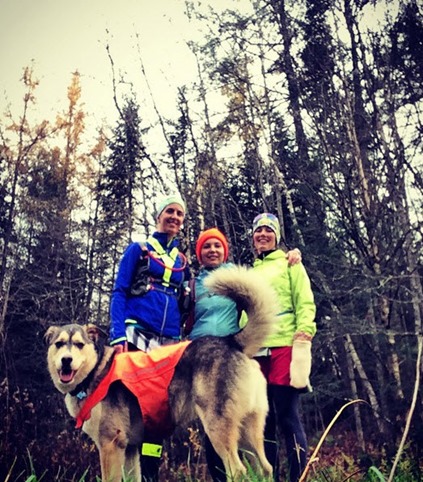
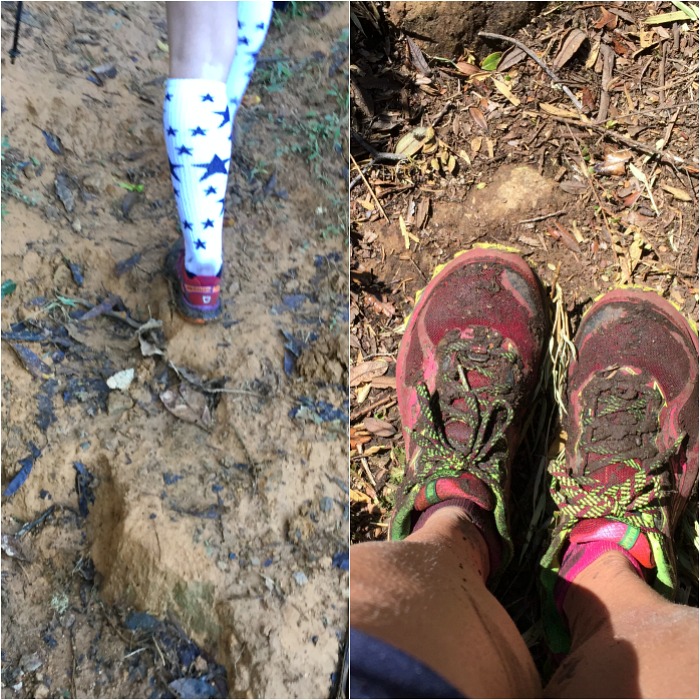

 10 Best Cheap Running Shoes
10 Best Cheap Running Shoes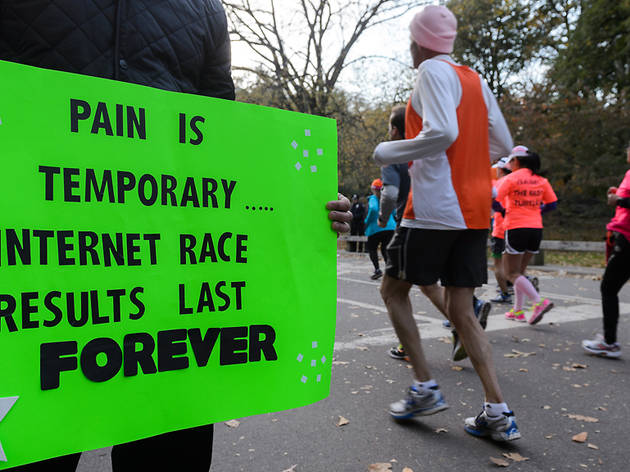

Norma Caballero
I started out as a road runner but once I went to my first trail race I fell in loooove. I still do road races (mostly the ones my friends do, to have some fun) but I enjoy trails so much more. I find being out on the trails so rewarding, I live in a big city but very lucky to have great trails and mountains very close so there’s always something new to discover. At first I was so afraid of getting lost but as you gain experience I feel now more prepared to be aware of the surroundings and find my way back if/when I think I’m lost.
Adam
Great tips Norma! I quickly learned what I started running in Colorado that some things just aren’t meant to be run. 😜
Cuong Trail Runner
Thanks for these helpful tips! My last trail race is miserably failed because I didn’t train balance enough so I got an injury when down the hill.
amanda
we totally overlook the downhills, but training our quads for it is huge
Shaun Kinnair
I’ve started in trail running. I’m taking it slow at the moment, just doing 3 miles each trail. Great way to see some amazing places while getting fit. Thanks for sharing Amanda.